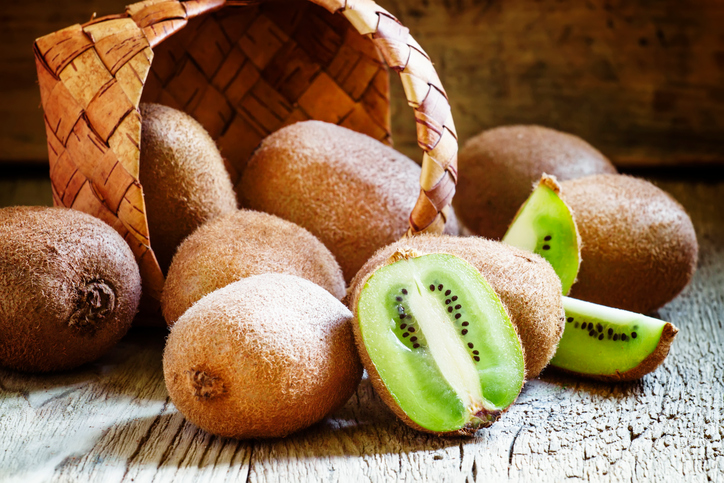
As part of a healthy diet, whole foods play a significant role in helping our bodies function their very best.
While there are countless extremely nutritious whole foods, some actually have the power to help you heal from various conditions and diseases. Along with consulting with a doctor and following a healthy lifestyle, of course, including more of the below foods in your diet can have multiple healing effects, from fighting cancer to guarding against heart disease.
10. Kiwi
What: This tiny, nutrient-dense fruit packs an amazing amount of vitamin C (double the amount found in oranges), has more fiber than apples, and beats bananas as a high-potassium food.
Helps To Heal/Prevent: Heart disease, stroke, cancer, respiratory disease, blood clots, high cholesterol, high blood pressure, oxidative stress and damage to DNA (prompts damaged cells to repair themselves), wounds and sores.
How Much: Aim to eat one to two ripe kiwifruit a day while they're in season, for the best taste and nutrition. California-grown kiwifruit are in season from October through May, and New Zealand kiwifruit are available between April and November.
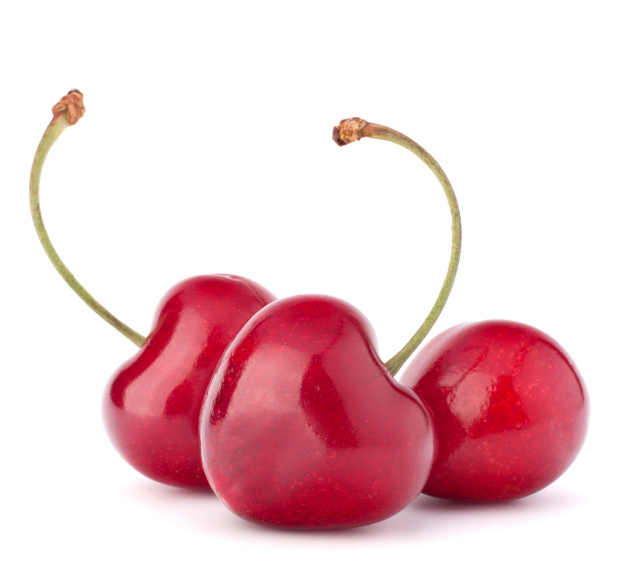
9. Cherries
What: Cherries boast a wide variety of healing powers, as well as packing a powerful nutritional punch for a relatively low calorie count.
Helps To Heal/Prevent: Inflammation, colon cancer, heart attacks, stroke, arthritis, rheumatism, anemia, gout, tumors and virus/bacterial infections. Plus they're delicious!
How Much: Aim for a daily serving while they're in season locally - and buy organic, if possible, since conventionally grown cherries can be high in pesticides. And keep a bag of frozen cherries in your freezer the rest of the year; frozen cherries retain 100 percent of their nutritional value and make a great addition to smoothies, yogurt, and oatmeal.
RELATED: 15 Foods That Speed Up Your Metabolism
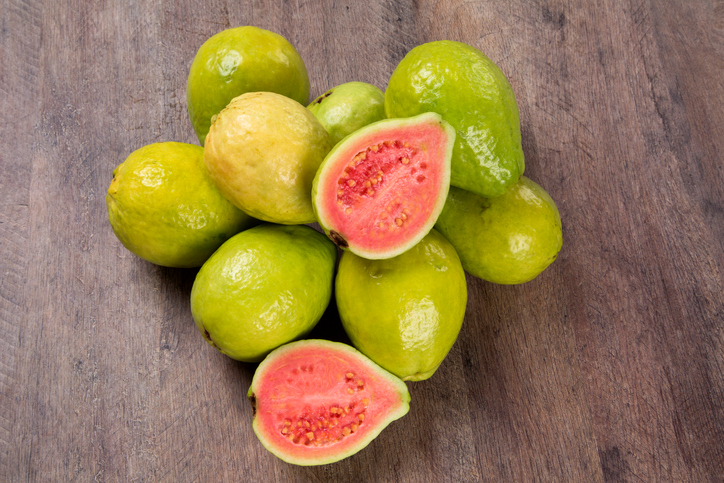
8. Guavas
What: Guavas are a small tropical fruit that can be round, oval, or pear-shaped. They're not all that common, so they might be hard to find, depending on where you live. But if you can track them down, it's more than worth it.
Helps To Heal/Prevent: Cancer (thanks to containing more cancer-fighting antioxidant lycopene than any other fruit or veggie), blocked arteries, joint degeneration, nervous system problems, prostate cancer tumors, coronary heart disease, stroke, high cholesterol, high blood pressure.
How Much: Aim to eat fresh guavas (buy the red-fleshed version instead of the white) as often as you can when you can find them in stores. They're not commonly available in the freezer section, and most guava juices are processed and sweetened, so they don't provide the same superior nutrition that the whole, fresh fruit does. One to two guavas a day is a good goal.
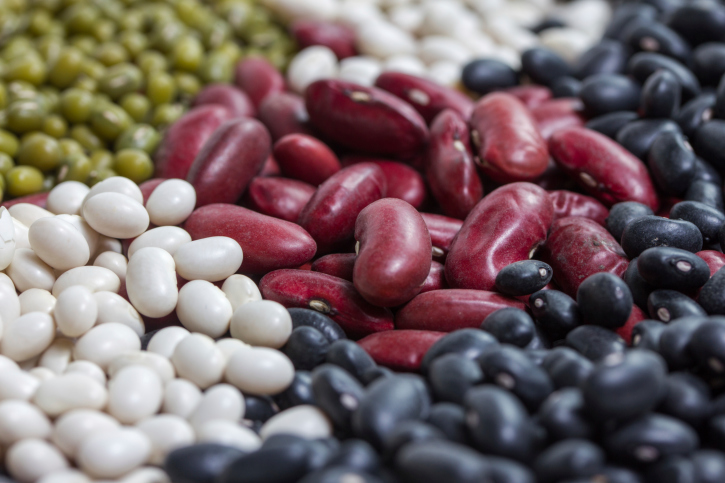
7. Beans
What: Beans are a miracle food. If you think of fiber, protein, and antioxidants and immediately think whole grains, meat, and fruit, think again - beans offer all three in a single package. Beans are a great source of dietary fiber, protein, and iron. They also contain the amino acid tryptophan; foods with high amounts of tryptophan can help regulate your appetite, aid in sleep, and improve your mood. Many are also rich in folate, which plays a significant role in heart health.
Helps To Heal/Prevent: High cholesterol, elevated blood sugar, digestive disorders (including food poisoning and diarrhea), laryngitis, kidney stones, edema, rheumatism, breast and colon cancer, type 2 diabetes and high blood pressure. Chinese medicine even uses various types of beans to help treat alcoholism!
How Much: Aim for a minimum of two servings of beans per week.
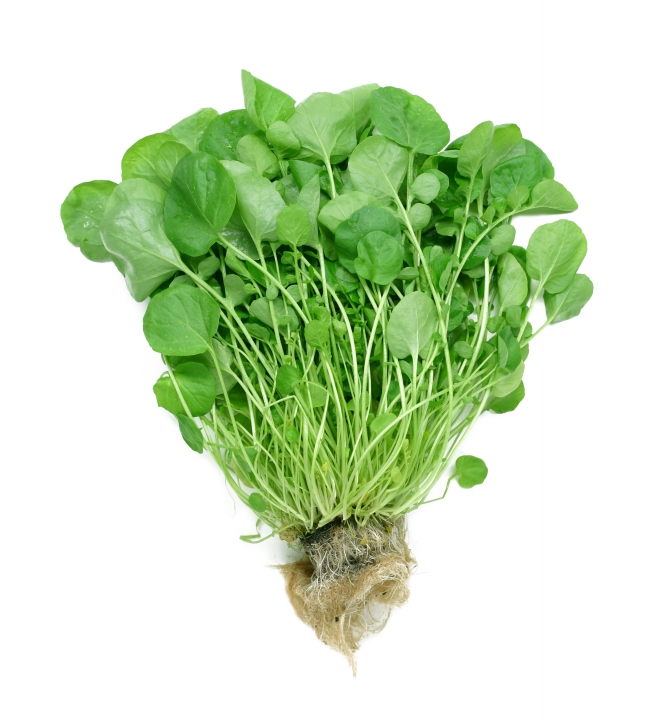
6. Watercress
What: Not only is watercress extremely nutritious, it's about as close as you can get to a calorie-free food. Calorie for calorie, it provides four times the calcium of two percent milk. Ounce for ounce, it offers as much vitamin C as an orange and more iron than spinach. It's packed with vitamin A and has lots of vitamin K, along with multiple antioxidant carotenoids and protective phytochemicals.
Helps To Heal/Prevent: Cancer, macular degeneration, a weakened immune system, bone disorders, tumors, poor vision, gas, jaundice, urinary disorders, sore throat, mumps and bad breath.
How Much: Eat watercress daily if you can - raw if possible, such as in place of lettuce. In some regions, it's more widely available during the spring and summer, when it's cultivated outdoors. But you can also generally find it year-round in many grocery stores and at your local farmer's market.
5. Spinach
What: You already knew spinach was good for you, but did you know just how good? Spinach has an amazing array of nutrients, including high amounts of vitamin K, calcium, vitamin A, vitamin C, folate, magnesium, and iron.
Helps To Heal/Prevent: Eye disease and vision loss, macular degeneration, heart attacks, brain disorders (including dementia), colon, prostate and breast cancer, heart disease, stroke, inflammation, bone disorders.
How Much: Fresh spinach (organic whenever possible) should be a daily staple in your diet. It's available in practically every grocery store, no matter where you live, it's easy to find year-round, and you'd be hard-pressed to find a more nutritionally sound, versatile green. So do yourself a healthy favor and aim for a few ounces -- raw, sauteed, or lightly steamed, every day. You can even add a handful of fresh spinach to your next fruit smoothie. It'll change the color, but not the taste.
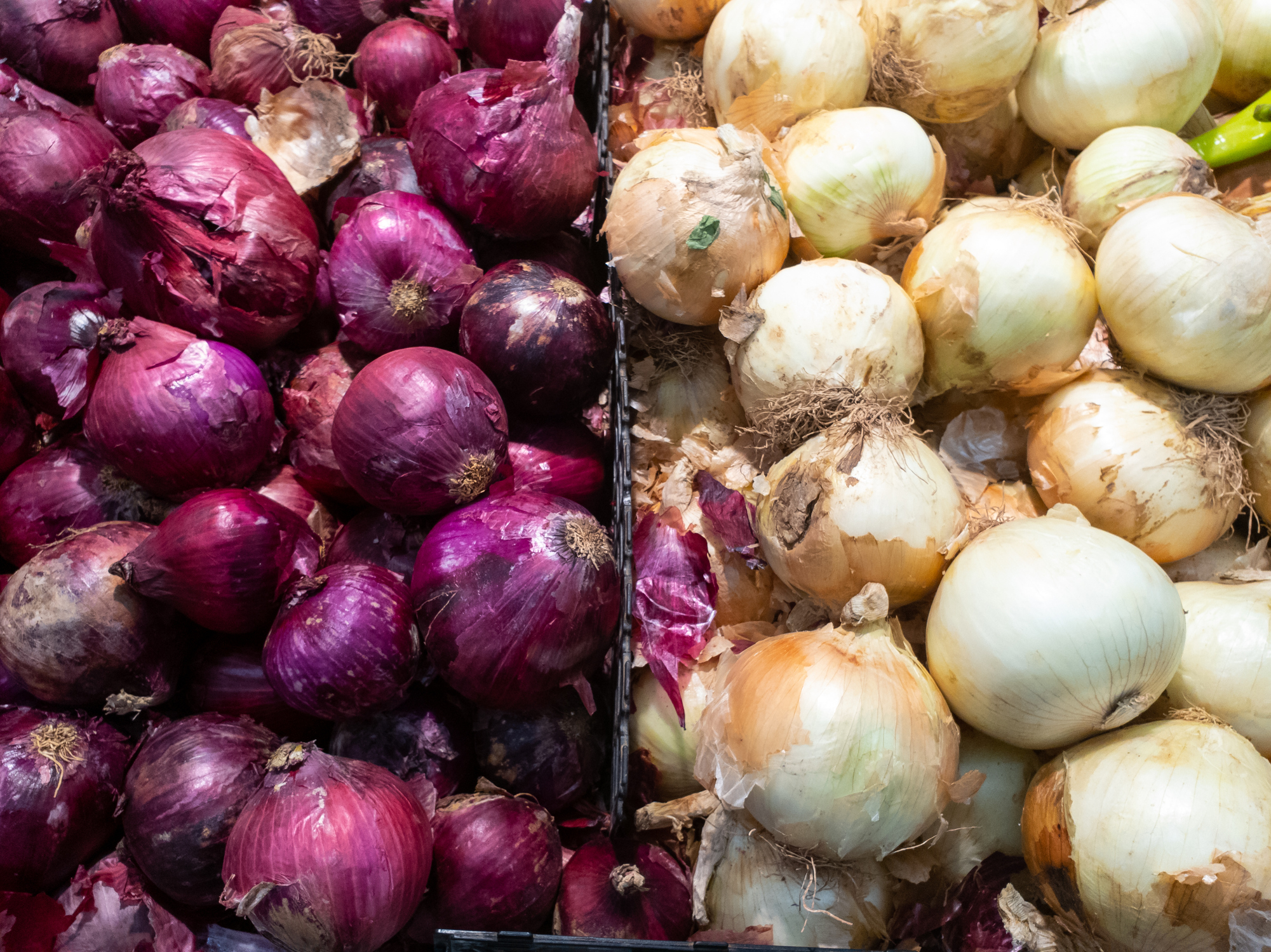
4. Onions
What: Onions have a bad reputation because of what they can do to your breath, but they still contain potent cancer-fighting enzymes and high levels of vitamin C.
Helps To Heal/Prevent: Prostate, esophageal and stomach cancer, coronary heart disease, high blood pressure, high cholesterol, bone loss, airway inflammation, allergies, cold and flu symptoms, arthritis pain and swelling and bacterial/viral infections.
How Much: For all the health benefits onions provide, it would be ideal to eat one a day, particularly raw. However, if that's not doable for you, add a few onions to your weekly grocery list and try to eat a little bit every day, especially shallots and yellow onions. By the way - cooking meat at high temperatures (such as on a grill) with onions can help reduce or counteract carcinogens produced by the meat.
RELATED: 10 Ways To Clean Your Colon

3. Cabbage
What: Cabbage is a powerhouse source of vitamins K and C. Just one cup supplies 91 percent of the recommended daily amount for vitamin K, 50 percent of vitamin C, good amounts of fiber, and decent scores of manganese, vitamin B6, folate, and more -- and it'll only cost you about 33 calories.
Helps To Heal/Prevent: Lung, colon, breast, ovarian, and bladder cancers, bone loss, allergic reactions, inflammation, gastrointestinal problems, ulcers, heart disorders, constipation, colds, whooping cough, depression and irritability, bedsores, varicose veins, and arthritis.
How Much: The more cabbage you can include in your diet, the better. Remember to use the whole cabbage, the red varieties are more nutritious than the white, and the outer leaves contain a third more calcium than the inner leaves. Try raw sauerkraut. It has all the health properties of cabbage, plus some potent probiotics, which are excellent for digestive health.

2. Broccoli
What: You'll find it difficult to locate another single food source with as many naturally occurring health-promoting properties as broccoli. A single cup of steamed broccoli provides more than 200 percent of the RDA for vitamin C (more than oranges), nearly as much of vitamin K, and about half of the daily allowance for vitamin A, along with plentiful folate, fiber, sulfur, iron, B vitamins, and a whole host of other important nutrients. And it contains about twice the amount of protein as steak.
Helps To Heal/Prevent: Lung, esophageal, prostate, gastrointestinal, gastric, skin, breast, and cervical cancers, heart disease and eye inflammation.
How Much: If you can eat a little broccoli every day, your body will thank you for it. If you can't swing it, aim to eat it as regularly as possible. Like many other vegetables, broccoli provides fantastic nutrition both in its raw form and when it's properly cooked. Cooking reduces some of broccoli's anticancer components, but lightly steaming it will preserve most of the nutrients.

1. Kale
What: Kale is in the same plant family as broccoli and cabbage, and, like its cruciferous cousins, it contains high levels of the cancer-fighting compound sulforaphane. It is highly nutritious, has powerful antioxidant properties, and is anti-inflammatory. One cup of cooked kale contains an astounding 1,328 percent of the RDA for vitamin K, 192 percent of the RDA for vitamin A, and 89 percent of the RDA for vitamin C. It's also a good source of calcium and iron.
Helps To Heal/Prevent: Prostate, gastric, skin, cervical, colon and breast cancers, bone loss and lung congestion.
How Much: Like cabbage, the more kale you can eat, the better. A daily serving is ideal - it's even a great addition to fruit smoothies or juiced with other vegetables. You can generally find it fresh at your local grocery or farmer's market. In some areas, it's available all year; in others, it only makes an appearance during summer and fall.
Remember: In addition to eating more of the right foods, as well as exercising more and stressing less, consulting with a doctor is still an essential step in condition/disease management.










